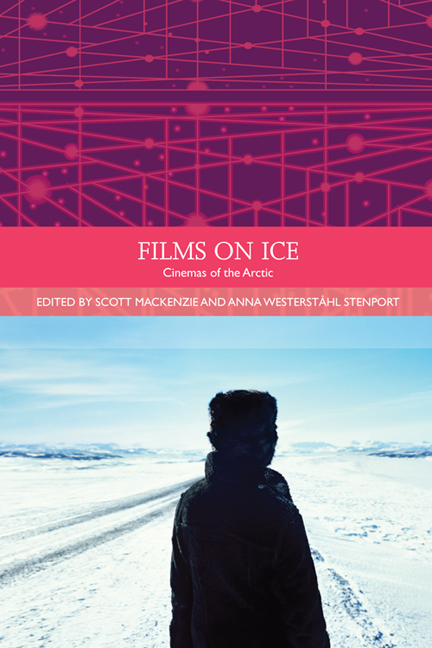Book contents
Introduction: What are Arctic Cinemas?
Published online by Cambridge University Press: 05 September 2016
Summary
With this book, we are intentionally coining a new conceptual rubric within World Cinema called ‘Arctic Cinemas’. This raises the question as to why we would bring together a diverse array of films made in and about the Arctic into one discrete category. We position different forms of Arctic filmmaking not typically placed in dialogue, whose interrelations are overlooked to uncover a counter-history that reveals the complexity of Arctic visual, cultural and ideological representation. Films on Ice is the first book to present a range of Arctic film traditions, genres, topics and practitioners, seeking to address a great cinematic diversity of representation and production practices in the region that have so often been overlooked. Engendering a dialogue between insiders and outsiders, the book's examples are drawn from three distinct but interrelated groups: (1) films made by Arctic residents, but mostly seen in the South through film festivals, speciality TV channels, and the Internet; (2) films made outside the Arctic, typically by outsiders, and viewed mostly in the South and; (3) films made and viewed by Arctic residents through narrowcast, broadcast and alternative venues. Films on Ice explores, from both historical and contemporary perspectives: (a) how these three filmmaking practices interrelate with one another; (b) the stories and perceptions about the Arctic that they generate, and (c) what they teach us about the tension and mutual interdependence between local image-making and global spectatorship. Films on Ice challenges dominant notions of the Arctic in both popular and political culture, offering a thorough analysis of what the very concept of the Arctic has come to mean in image-making and how the term ‘The Arctic’ itself postulates a unifying singularity that elides the political, geographic, national, transnational and linguistic differences that define and populate the region. This approach is based on the assumption that aesthetic, cultural, political, economic and scientific interests in ‘The Arctic’ always have been intertwined. This introduction provides a guide for understanding the present and past of the Arctic in ways that demonstrate how moving images (cinema, television, video and digital media) have been central to the very definition of the Arctic since the end of the nineteenth century.
- Type
- Chapter
- Information
- Films on IceCinemas of the Arctic, pp. 1 - 28Publisher: Edinburgh University PressPrint publication year: 2014

